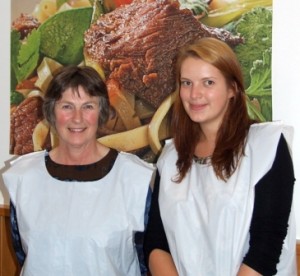 The National Meat Workers Union’s General Secretary Grahame Cooke stated last Monday the large loss published by Alliance Group would be the first of several for the 2012 year. His point is fairly accurate, confirmed by Silver Fern Farms’ loss announced on Tuesday, writes industry commentator Allan Barber.
The National Meat Workers Union’s General Secretary Grahame Cooke stated last Monday the large loss published by Alliance Group would be the first of several for the 2012 year. His point is fairly accurate, confirmed by Silver Fern Farms’ loss announced on Tuesday, writes industry commentator Allan Barber.
Of the other companies ANZCO and Blue Sky Meats will file their results with the Companies Office at the end of March. AFFCO is now a wholly owned subsidiary of Talley’s and doesn’t disclose its results, although the Meat Workers Union says (optimistically) these will be horrendous because of the lock out earlier this year. AFFCO’s results may not be as bad as all that because of the lack of a peak kill.
Cooke’s next point was the losses would inevitably lead to more industry rationalisation; this in turn would cause job losses for the meat workers who have already been affected by several plant closures in recent years. Job and earnings security suffered from fewer stock numbers and shorter season with workers being paid piece rates for shorter shifts; also higher average weights mean better productivity which is true for lambs, but not cattle.
His final point was about the lack of industry leadership in spite of the fact there are a number of good individual companies, all competing vigorously with each other. Cooke said the meat industry has not changed in the last fifty years with poor marketing and plant closures quickly followed by the addition of more capacity. He described the industry graphically as behaving like a cow with its head chopped off.
A look at the Union’s website provides more information on this topic: plant capacity has increased over the past decade with new plants, rebuilds and upgrades at nine plants across the country as well as capacity increases at several more. The Union believes the Government must initiate a ‘meat summit’ to address this.
So the questions are whether Cooke is correct or the industry is behaving in a perfectly rational manner.
My first reaction is the Government will never initiate a summit, almost certainly just another talkfest, because it realises the industry has a functioning commercial model. It competes in a global market and government should never interfere with privately owned businesses, provided they comply with the law. The meat industry has its own industry body, the MIA, which deals with all sorts of industry issues, but not those which impinge on competition between its members.
In addition, land use changes dictated by relative sector profitability will continue to occur regardless. The government would not be wise to get involved in picking winners or hobbling one sector’s ability to adjust its processing facilities.
My next reaction is meat processors and exporters are not the whole industry. There is a value chain which starts behind the farm gate and finishes in restaurants or consumers’ homes. The Red Meat Sector Strategy, FarmIQ and other company based initiatives attempt to define what can be done to join links in the value chain so they contribute to higher, more consistent returns. But it’s up to the farmers to produce to these specifications.
Meat exporters have done a great job over recent years to convert yesterday’s freezing industry into a sophisticated red meat member of the food industry, while also expanding into high value medical and other non-food product areas. More can always be done, but the industry has moved light years from the age of subsidies.
However, this process of modernisation has of necessity been achieved at a cost to overall jobs and terms of employment. The older plants were inefficient and built to service a different industry structure from a previous age. The period following deregulation and more particularly the removal of subsidies saw many farmers in serious financial straits, so their only option was to change farming practice or land use or sell. An unavoidable, even desirable, outcome was a big decline in sheep and prime beef numbers, offset to some extent by the growth in the dairy industry and the US manufacturing beef market.
Owen Poole made the point to me the losses are a sheepmeat problem and Alliance has responded by making the appropriate plant decisions, such as closure of Mataura sheepmeat processing, doubling Mataura’s beef capacity, increased venison processing at Smithfield and rendering at Lorneville. Keith Cooper also confirmed his satisfaction with SFF’s footprint in relation to livestock volumes, having already taken some tough capacity decisions.
This emphasises the regular requirement for new plant configurations to meet the demands of the market place and consequently the workforce must adapt as well. My experience tells me the meat industry does a pretty good job of responding to changes in market conditions, while generally trying to keep its workforce employed. But there is no future in keeping inefficient plants running to protect workers’ jobs, because these will disappear sooner rather than later.
Equally there are no prizes for leaving customer orders unsupplied when competitors are still prepared to process livestock. I certainly wouldn’t fancy the chances of the industry leader who sets an example by refusing to pay the money and has to tell Tesco or Marks and Spencer his company can’t supply because the stock costs too much this week.
Leadership is not as simple as it appears.
The item has appeared in NZ Farmers Weekly and at Allan Barber’s blog Barber’s Meaty Issues.
 Leading meat processor and exporter Alliance Group is hosting a representative of one of the UK’s leading supermarkets.
Leading meat processor and exporter Alliance Group is hosting a representative of one of the UK’s leading supermarkets.
